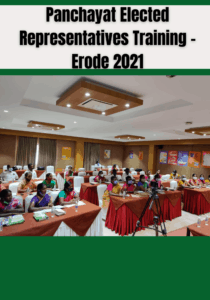Third National Consultation on Local Government
An Introduction:
Gram Swaraj – independent, self–sufficient, village republics – formed the cornerstone of our independence struggle. Yet 70 years after the British have left, it remains a partially fulfilled dream at best. It took 45 years after independence to partially enshrine local government in our constitution through the 73rd and 74th amendments and the panchayats (Extension to Scheduled Areas) Act (PESA) for rural, urban and fifth schedule areas respectively. Some progress has been made in local government that has not been possible in the state or central government, of which the representation of women is a significant example. It has been made possible both because of explicit reservation for women – 33% initially, but with more states moving to 50% – and because the proximity of the seat of governance to the habitation makes it easier for women to participate. For instance, Tamil Nadu has consistently had about 5% more women elected than the quota at the panchayat level – but has dismal representation of women in the state legislature and in the national parliament. The overall picture is not rosy either. The devolution of powers is still incomplete, in part due to not having a separate list in the Constitution of India for local government on the lines of the state, union and concurrent lists. This gap leads to absurdities of scheduled areas being ruled by the forest department and all local governments (in rural, urban and scheduled areas) accountable to the bureaucracy – a remnant of the colonial era when all elected representatives were accountable and subservient to the British bureaucracy. Now the local government is accountable to the state bureaucracy. Additionally, restrictions that do not apply to the state and central elections are being imposed on representatives at the local government – like the conditions on schooling or the number of children. These disproportionately affect those from social excluded communities and vulnerable sections….




